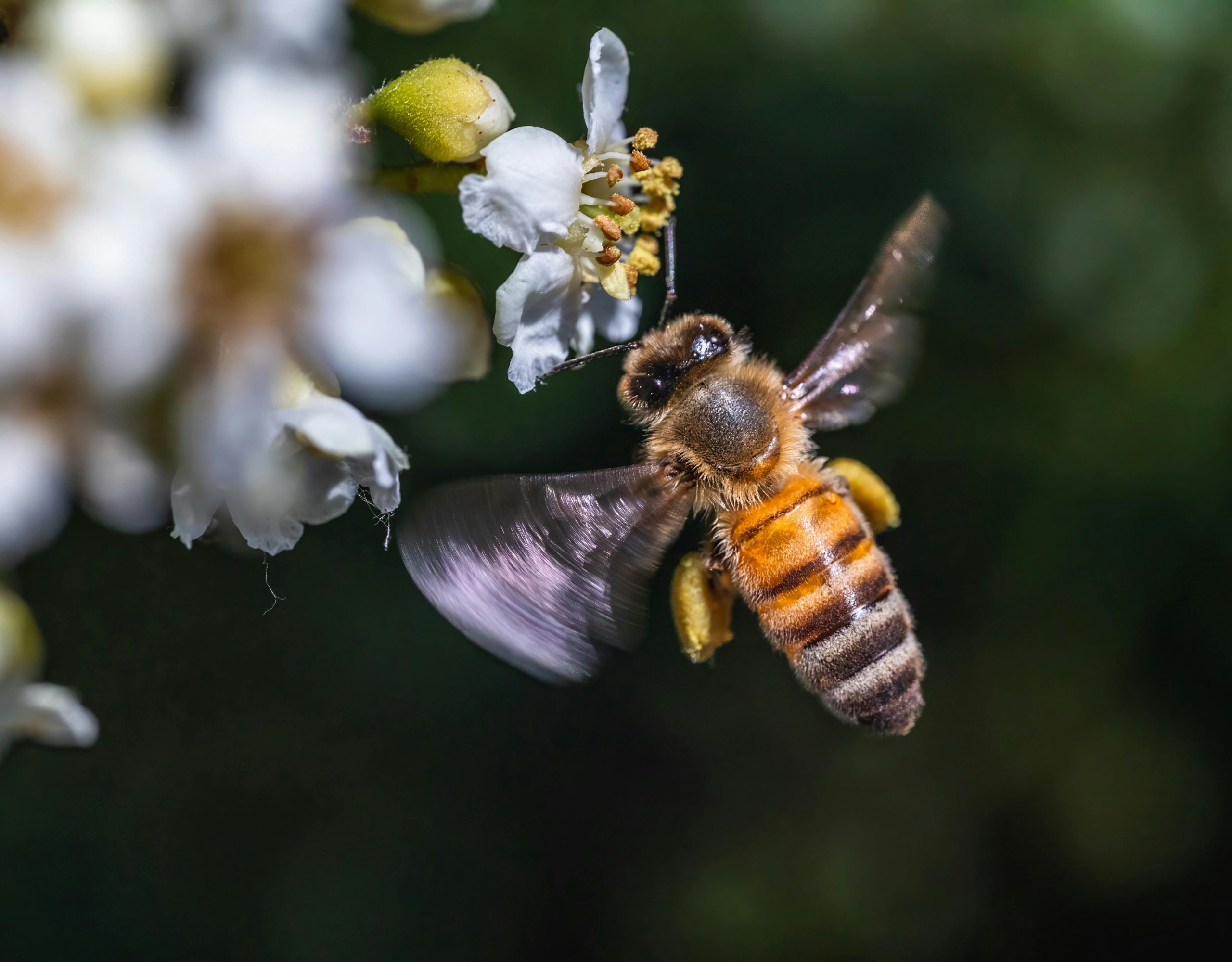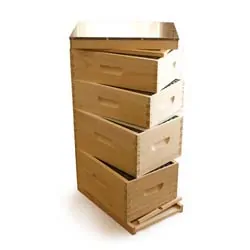Most people know the importance of honeybee populations when it comes to their help with pollination as they are out searching for resources, but not everyone fully understands why exactly bees do go on foraging trips to begin with! Though honeybees’ foraging activities are incredibly important to ecosystems and agricultural establishments worldwide, their natural foraging behavior is strictly completed to benefit their own colonies.
Worker honeybees complete foraging flights to visit various plants and bring home resources that they need to survive. They collect nectar which provides carbohydrates needed for energy and building wax, which gets turned into honey and stored to be used later when natural sources aren’t available (like during the winter months). Bees do, of course, help with pollination, too, by attaching pollen to their legs and flying it back to the hive. Pollen is integral to providing protein and other nutrients, especially important in larval development.
In addition to nectar and pollen, some foraging bees are tasked with bringing water or propolis back home. Water is needed to provide hydration to bees and to help with cooling the inside of the hive, though bees must stay conscious of avoiding moisture levels that get too high. Propolis is collected from tree sap or resin and has a variety of uses in-hive for but is primarily helpful in sealing any cracks or holes in the wood.

Foraging may sound like a bit of a free-for-all, with bees flying everywhere, but it’s actually quite a methodical process. Bees decide where and when to forage based on what the colony needs and their activities for that time of year. They’ll communicate amongst themselves using scent and buzzing to tell other bees what they need and where to find it, especially important in the case of high-quality food sources.
The environment around a beehive’s location and weather conditions can hinder a colony’s ability to forage and store the resources needed to survive, especially during times when a nectar or pollen dearth may be occurring. If you’re concerned that your bees’ foraging efforts are being thwarted by long periods of cold temperatures or changes in floral availability, you may need to help bees by offering supplemental feed.
Read More
How Bees Sense and React to Their World
Helping Bees Through a Pollen or Nectar Dearth
Providing Pollinator Friendly Plants
Exploring the Process of Pollination
Why and How Honeybees Forage *
Understanding the Honey Flow *
* Colony Member–Only Content
Related Products in the PerfectBee Store
A Colour Guide to Pollen Loads (Book)
Attracting Native Pollinators (Book)
